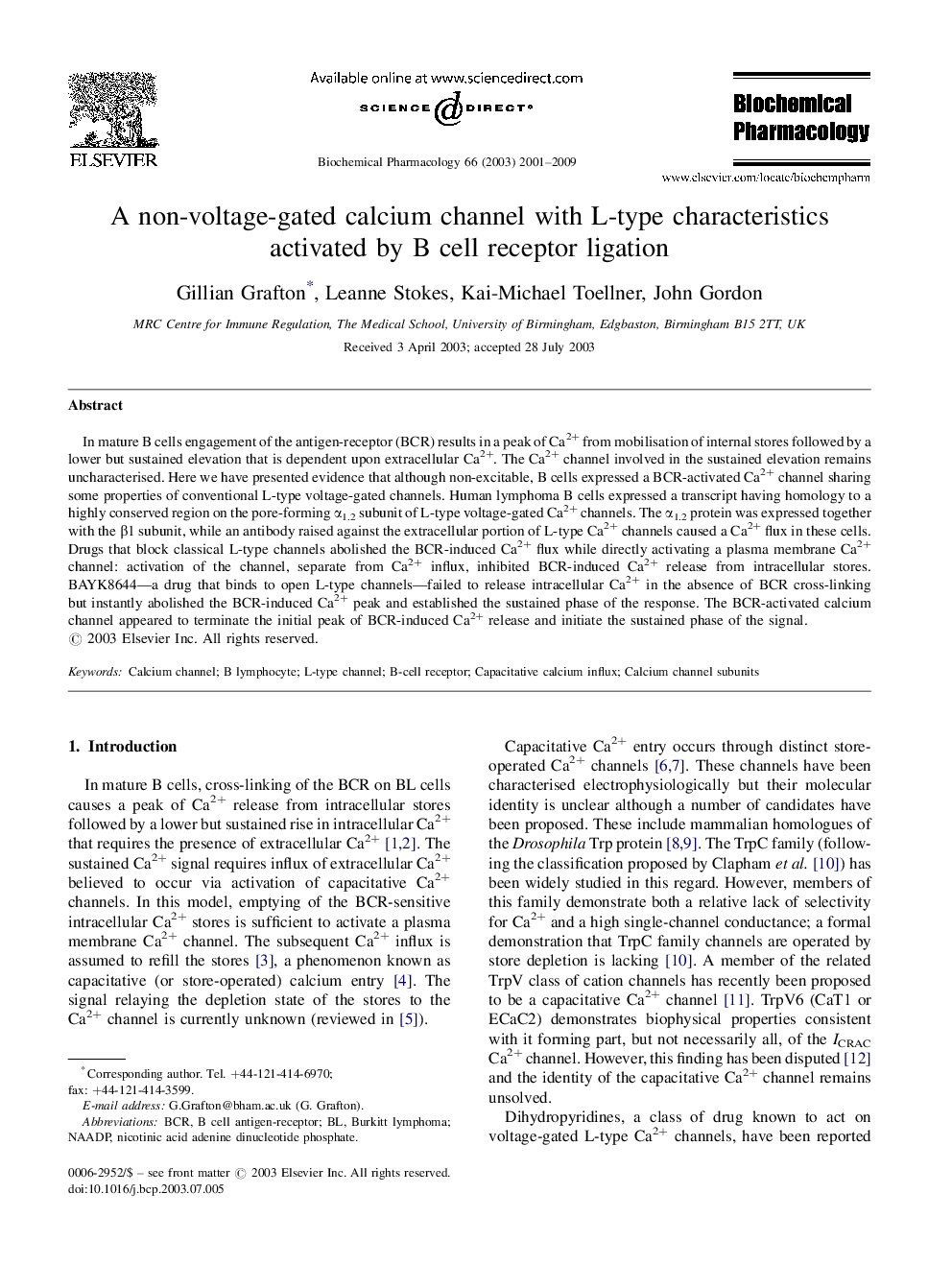| Article ID | Journal | Published Year | Pages | File Type |
|---|---|---|---|---|
| 2515956 | Biochemical Pharmacology | 2009 | 9 Pages |
In mature B cells engagement of the antigen-receptor (BCR) results in a peak of Ca2+ from mobilisation of internal stores followed by a lower but sustained elevation that is dependent upon extracellular Ca2+. The Ca2+ channel involved in the sustained elevation remains uncharacterised. Here we have presented evidence that although non-excitable, B cells expressed a BCR-activated Ca2+ channel sharing some properties of conventional L-type voltage-gated channels. Human lymphoma B cells expressed a transcript having homology to a highly conserved region on the pore-forming α1.2 subunit of L-type voltage-gated Ca2+ channels. The α1.2 protein was expressed together with the β1 subunit, while an antibody raised against the extracellular portion of L-type Ca2+ channels caused a Ca2+ flux in these cells. Drugs that block classical L-type channels abolished the BCR-induced Ca2+ flux while directly activating a plasma membrane Ca2+ channel: activation of the channel, separate from Ca2+ influx, inhibited BCR-induced Ca2+ release from intracellular stores. BAYK8644—a drug that binds to open L-type channels—failed to release intracellular Ca2+ in the absence of BCR cross-linking but instantly abolished the BCR-induced Ca2+ peak and established the sustained phase of the response. The BCR-activated calcium channel appeared to terminate the initial peak of BCR-induced Ca2+ release and initiate the sustained phase of the signal.
